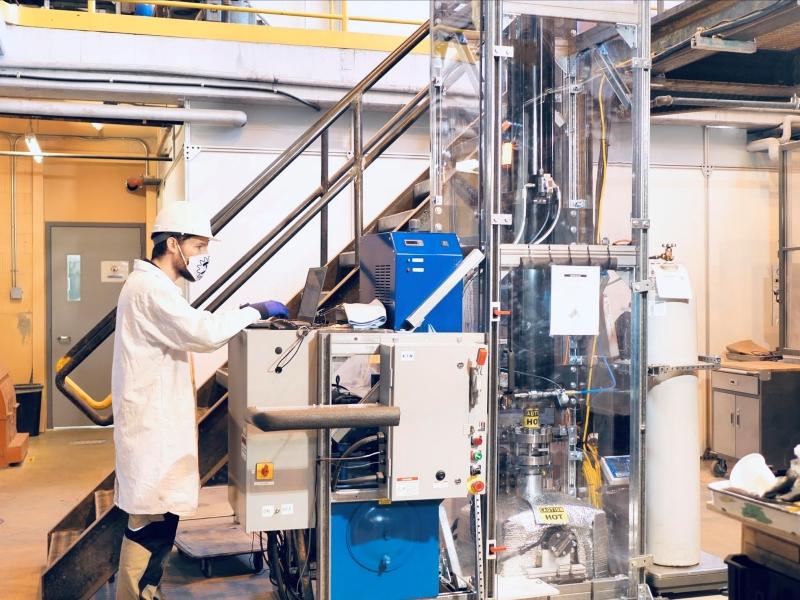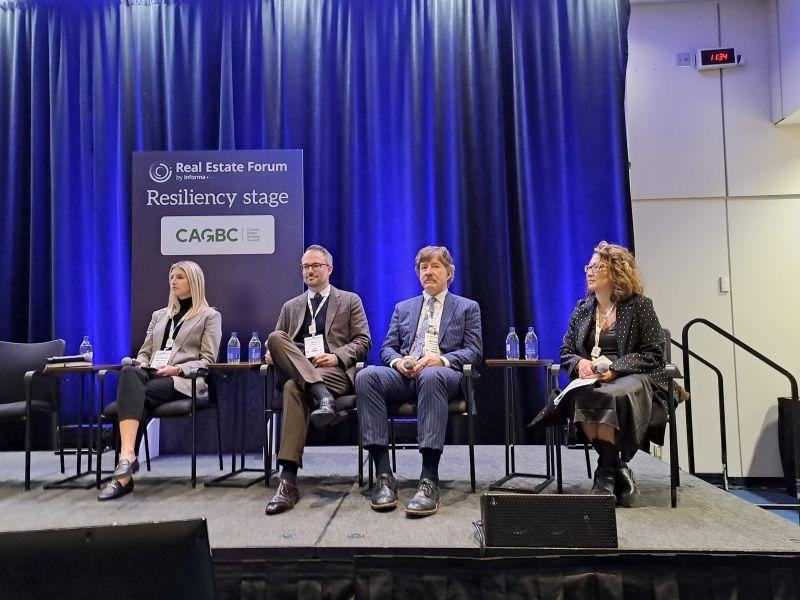
VulcanX Energy Corp. has received $2 million in funding from FortisBC's Clean Growth Innovation Fund to begin design and engineering work on a hydrogen plant that will harness natural gas to produce zero-emission hydrogen and solid carbon.
The financing will enable VulcanX to deploy its low-cost, proprietary hydrogen pyrolysis technology. The process uses molten metal to heat natural gas to 1,000 C, causing the gas to bubble through the molten metal. This in turn cracks the natural gas hydrocarbons to produce hydrogen and solid carbon powder, instead of gaseous carbon, as byproducts.
VulcanX has already proven the potential of its technology at its demonstration facility in Fort Saskatchewan, Alta. and is preparing to expand operations in B.C. as part of its strategy to become a major hydrogen player.
A spin-off venture from MéridaLabs at the University of British Columbia, VulcanX is in the process of raising the $40 million needed to build a scalable facility with an initial target of delivering one tonne of hydrogen per day and a maximum capacity of 50 tonnes per day.
"FortisBC is putting words into action by supporting us via the Clean Growth Innovation Fund. We at VulcanX cannot wait to get this project started," VulcanX CEO Omar Herrera said in a release.
The startup plans to finance the hydrogen plant through a combination of matching funds from the Province of Alberta and private investment from energy companies.
VulcanX expects to have the plant and reactor operating by the end of 2026. The facility is being designed to produce zero-carbon green hydrogen by drawing on renewable energy and deliver this clean hydrogen at a competitive price.
A technological leap in green hydrogen production
Hydrogen is a critical component in the transition to a low-carbon energy ecosystem and is primarily used in ammonia production, oil and gas cleanup and as a renewable fuel for the heavy trucking industry.
These applications will help reduce emissions in the transportation sector and other hard-to-abate industries actively looking for green energy solutions.
FortisBC, a British Columbia-regulated utility, is the largest provider of natural gas in the province. It is transitioning away from supplying conventional natural gas to distributing low- and zero-carbon gases such as RNG (renewable natural gas) and, ultimately, hydrogen.
"We are pleased to work with companies such as VulcanX through the Clean Growth Innovation Fund to advance the development of new technologies that can be used for the production of hydrogen," Joe Mazza, vice-president of energy supply and resource development at FortisBC, said in a release.
Low-cost production method

One of the chief advantages of VulcanX's pyrolysis tech, apart from emissions-free hydrogen, is that it can produce clean hydrogen at the same price as hydrogen produced by the conventional and relatively "dirty" steam methane reforming (SMR) process that turns out "grey" hydrogen.
"What separates us from almost everyone else in the hydrogen production sector is that and we are at par with SMR in terms of cost," Herrera said in an interview with Sustainable Biz Canada.
"Further, for every kilogram of hydrogen produced by SMR, you are producing between eight and 12 kgs of CO2 (carbon dioxide) emissions. Not only do we operate at zero emissions, but we can produce hydrogen for $1.20 per kilogram once we ramp up production, which we expect to do very quickly, to 10 tonnes per day.
"For those companies producing hydrogen via SMR they need to be producing 200 tonnes of hydrogen per day to be able to deliver (at that price point)."
Scalability of new VulcanX reactor
VulcanX plans to coordinate with a major engineering firm to build out the new project reactor and carry out the necessary procurement work prior to construction.
Herrera hopes to build the plant in B.C. subject to obtaining the necessary environmental permitting and raising financing "from current and future partners"
"The intention is to work with FortisBC to find the right location, the right off-taker, and (finalize the cost structure) of the hydrogen facility. Based on our CFD (computational fluid dynamics) modelling we estimate that we'll be able to scale this reactor up to 50 tonnes of hydrogen per day without having to build a new reactor," Herrera explained.
Overall outlook for hydrogen demand is promising
VulcanX is on target to reach the market with its new hydrogen production plant at a point where the demand for hydrogen from the heavy truck and industrial processes sectors are expected to have significantly grown, toward the end of this decade.
Herrera has worked in the hydrogen space his entire professional life and obtained his doctorate in hydrogen and fuel cell technology from the National University of Mexico in 2004.
He was part of the team of researchers at UBC's Mérida lab that included Walter Mérida and Amir Sharafian which developed the patented hydrogen pyrolysis technology that led to the founding of VulcanX in October 2022.
VulcanX has also embarked on a flexible strategy whereby it can balance production with demand.
"We're not worried about demand - there is clear use for that hydrogen and (expectations) are that demand will continue to increase and that there will be twice as many hydrogen users by 2030," Herrera said.
"We have plenty of buyers for our hydrogen production in areas like ammonia production, oil and gas cleanup and upgrading. And the carbon powder we produce can be used in tire manufacturing, cement upgrading, as well as in asphalt and steel manufacturing processes. There's many things that we can do with that carbon."










